Essential Information - Chile & Argentina
Patagonia & the Lake District
Before booking your holiday with us, please check the status of your chosen tour. We strongly advise against booking any flights or making other travel arrangements until the tour is marked as Guaranteed.
To confirm your place, simply pay the deposit. This deposit can be refunded at any time until the tour status changes to "Guaranteed". Your final balance will be due 56 days before the tour start date.
When you book, you are agreeing to our booking conditions – please take a moment to read them in full.
Each tour requires a minimum number of participants to go ahead. As bookings come in, the status will update from Available, to 2 More to Guarantee, and finally to Guaranteed once the minimum is met. You can always check the current status on the ‘Dates and Prices’ section of the tour page.
Please note: For groups of fewer than four participants, the guide will lead the tour from the support vehicle rather than riding with the group on a bike. This ensures both guiding and logistical support can still be provided.
Tour status definitions:
✅ Guaranteed – The tour is confirmed and open for booking.
✅ Guaranteed – Limited – Confirmed to run, but only a few spaces left.
⏳ Available – 2 More to Guarantee – Tour is open but needs just 2 more bookings to confirm.
🟢 Available – Open for booking but not yet confirmed to run.
📩 Contact – Please get in touch if you're interested in this tour.
❌ Fully Booked – This tour is no longer available.
Once a tour is marked Guaranteed, you can confidently go ahead with booking your flights and making travel plans. We don’t cancel trips once they reach guaranteed status, except in very rare and exceptional circumstances.
Your tour includes the following:
 Support vehicle throughout the trip
Support vehicle throughout the trip
 Accommodation in locally selected lodgings
Accommodation in locally selected lodgings
 Most meals – including welcome dinner (Day 1) and farewell dinner (Day 13) (see trip notes for full details)
Most meals – including welcome dinner (Day 1) and farewell dinner (Day 13) (see trip notes for full details)
 Snacks and mineral water on cycling days
Snacks and mineral water on cycling days
 Airport transfers on the first and last day of the tour
Airport transfers on the first and last day of the tour
 Catamaran transfers on Days 4, 5, and 6
Catamaran transfers on Days 4, 5, and 6
 Entry tickets for Nahuel Huapi and Conguillío National Parks
Entry tickets for Nahuel Huapi and Conguillío National Parks
 Experienced local English-speaking cycling guide(s)
Experienced local English-speaking cycling guide(s)
We aim to make your journey as smooth, supported, and enjoyable as possible — so you can focus on the adventure!
The following items are not included in the tour price:
 International flights
International flights
 Alcoholic drinks
Alcoholic drinks
 Meals not listed in the itinerary
Meals not listed in the itinerary
 Visa fees (if applicable)
Visa fees (if applicable)
 Travel insurance (mandatory for all participants)
Travel insurance (mandatory for all participants)
 Single room supplement (available on request)
Single room supplement (available on request)
 Tips for guides, support staff, and restaurant service
Tips for guides, support staff, and restaurant service
 Bike hire (available for an additional charge)
Bike hire (available for an additional charge)
 Cycle helmet (you must bring your own)
Cycle helmet (you must bring your own)
If you have any questions, feel free to get in touch — we’re happy to assist!
✈️ Tour Start & End
Your tour begins in Puerto Montt on Day 1 of the itinerary (Sunday) and finishes in Temuco on the final Saturday.
🚐 Airport Transfers
We offer two complimentary airport transfers from Puerto Montt Airport (PMC) on Day 1 — one at 1:00 PM and another at 3:30 PM. If your flight arrives outside these times, we can arrange a private transfer for an additional cost.
Please note: Early check-in at the hotel cannot be guaranteed. If you arrive before 12:00 PM, your room may not be ready immediately, but we will still transfer you and your luggage to the joining hotel.
🧳 Flight Information
International flights are not included in the tour price. For travellers flying from Europe, LATAM Airlines is a popular option. We recommend booking an open-jaw flight — arriving in Puerto Montt (PMC) on Sunday and departing from Temuco (ZCO) on Saturday. Websites like kayak.com or opodo.co.uk are useful for comparing prices and routes.
If you're flying via Santiago, you must collect your luggage and re-check it for your domestic flight to Puerto Montt. This is essential, as the airline does not automatically transfer luggage between flights. Failing to do so could result in a delay of several days before your baggage reaches you.
🧭 Joining Instructions
Around 14 days before your tour starts, we will send you full joining details by email. This will include the name and address of your joining hotel, contact details for our local team, a printable itinerary, and an equipment checklist to help with your preparations.
❓ Need Help?
If you have any questions or need support with your travel plans, please don’t hesitate to get in touch — we’re always happy to help!
The currency in Chile is the Chilean Peso (CLP).
The currency in Argentina is the Argentine Peso (ARS).
What to Bring:
- UK, Canada, New Zealand, Australia, and US travelers: Bring US Dollars (USD) in clean, undamaged bills – these are widely accepted for exchange.
- European travelers: Euros (€) are also accepted, but USD usually gets better rates.
Where to Exchange:
- Licensed exchange bureaus ("casas de cambio") and ATMs are available in major cities like Puerto Montt, Salta and Bariloche. You will need to withdraw sufficient CLP in Puerto Montt at the beginning of the tour as ATMs are less available in more rural areas.
- Avoid exchanging at the airport or hotels, where rates are often significantly lower.
- Bring some cash in USD in case ATMs are not functioning or have low limits.
- Your local redspokes guide will assist you with the best money exchange options and ATM access during the tour.
Spending Money
The amount of spending money depends on your taste for souvenirs, drinks etc. We estimate that £450 ($600) will be more than enough to cover the 14-day tour.
During the redspokes Chile–Argentina tour, evening meal and drink prices can vary based on location and dining preferences. Here's an overview to help you budget:
🍽️ Typical Meal & Drink Prices – Patagonia Region Argentina (Per Person)
Item Avg. Price (ARS) Approx. Price (£)
🥗 Mid-range 3-course meal ARS 16,000–35,000 £12–£26
🥩 Steak dinner with wine ARS 25,000–40,000 £19–£30
🍺 Domestic beer (0.5L draught) ARS 1,000–3,000 £0.75–£2.30
🍻 Imported beer (0.33L bottle) ARS 2,900–6,500 £2.20–£5.00
🥤 Soft drink (0.33L bottle) ARS 1,000–2,500 £0.75–£1.90
💧 Water (0.33L bottle) ARS 900–2,000 £0.70–£1.50
Chile (Per Person)
Item Avg. Price (CLP) Approx. Price (£)
🥗 Mid-range 3-course meal CLP 16,000–35,000 £14–£31
🥩 Steak dinner with wine CLP 25,000–35,000 £22–£31
🍺 Domestic beer (0.5L draught) CLP 2,000–5,000 £1.80–£4.50
🍻 Imported beer (0.33L bottle) CLP 2,900–6,500 £2.60–£5.80
🥤 Soft drink (0.33L bottle) CLP 1,000–2,500 £0.90–£2.30
💧 Water (0.33L bottle) CLP 900–2,000 £0.80–£1.80
🧭 Helpful Tips
Cash is essential, especially in rural or remote areas where card machines may not be available.
Notify your bank before travel to avoid having your card blocked for suspicious activity.
Carry small denomination notes—useful for tips, snacks, or local markets.
Currency conversion charges can vary by card and bank, so check with your provider before departure.
And remember, your redspokes guide is here to help—you’re in good hands.
💁♂️ Staff Tipping
Tipping is a common way to show appreciation for your local guides and support crew. While not mandatory, it is greatly appreciated when service exceeds expectations.
At redspokes, we make it clear to our teams that tips are not an obligation, but a bonus based on performance. If you feel your guide and support crew provided excellent service, a tip at the end of the tour is a meaningful gesture.
How to Tip
We recommend tipping as a group, with the total collected and handed to your guide, who will distribute it fairly among the team.
Suggested Amount
💷 £60–£80 per person
💵 $80–$100 equivalent
Please note: Tips are not a substitute for wages. Our local teams are paid fairly and competitively—tips are simply a personal thank-you for exceptional service
🚐 Arrival & Departure Transfers – Chile/Argentina Tour
✈️ Arrival Transfers
We offer two group transfer times on the tour start date:
🕐 1:00 PM & 🕞 3:30 PM
Guests are grouped based on flight arrival times.
✅ Recommended flight arrival: No later than 3:00 PM
This allows time to clear immigration and customs.
🔍 After collecting your luggage, look for your driver in the arrivals hall holding a “redspokes” sign. We aim to minimise wait times and ensure a smooth transfer to the hotel.
🧳 Departure Transfer
On the final day, a group departure transfer will leave at:
🕛 12:00 noon
✅ Recommended return flight departure: From 5:00 PM onwards
🕓 Total journey time from La Baita to Temuco Airport: ~4 hours
(including travel + 2 hours for check-in/security)
🚖 Private Transfer Option
If your flights don’t align with group transfers or you're travelling outside the official tour dates, we can arrange private transfers:
Route Cost Capacity
🛬 Puerto Montt Airport → Frutillar £40 Up to 4 people
🏞 La Baita → Temuco Airport £100 Up to 4 people
📅 Let us know your travel plans and we’ll assist with the most convenient transfer arrangements.
🛏️ Accommodation – Chile & Argentina
On this tour, you’ll enjoy:
🏨 11 nights in carefully selected, comfortable hotels
🏔 1 night in a scenic mountain lodge
🍳 Breakfast is included each day.
All our accommodations are:
✅ Cyclist-friendly
✅ Chosen to suit our group size and comfort needs
✅ Ideally located to support a smooth and rewarding ride through the breathtaking Lake District of Chile and Argentina.
Expect a warm welcome, restful nights, and stunning views at every stop along the way.
🚲 Bike Hire
Prefer not to bring your own bike? No problem — bike hire ande e-bike hire is available at an additional cost.
🛏️ Single Room Supplement
Traveling solo and want your own space? You can opt for a private room (subject to availability).
🏨 Extra Accommodation
Arriving early or staying on after the tour? We can book additional nights for you.
🚐 Airport Transfers
We can also arrange your airport transfers before or after the trip.
💬 You can add any of these options when booking, or contact us later — we're happy to help.
For this tour, we offer brand new Specialized Rockhopper mountain bikes, maintained to the highest standard and equipped with Shimano components and suspension forks and eBikes Specialized Turbo Vado 3.0 ands 4.0 for those wanting a litte extra zip up the hills!

- Specialized turbo Ebikes, VADO 3.0
 Specialized Rockhopper Expert
Specialized Rockhopper Expert
🚴♂️ Bike Suitability for the Chile/Argentina Tour
The Chile/Argentina tour is demanding on bikes—expect rough surfaces, potholes, and washboard tracks—so your bike needs to be tough and well-prepared.
🔧 Recommended Setup
🚵♂️ Mountain bikes are ideal – front suspension helps on rough ground but isn’t essential.
🛞 Full suspension is fine, though can feel heavy on longer tarmac sections.
🌍 Touring bikes can be suitable if they have:
💪 Strong wheels (ideally 36-spoke, hand-built)
🏁 Wide tyres (minimum 37mm)
⚙️ Low gearing (e.g. 22T front cog with 11–32/34 cassette)
✋ Bar ends for extra hand positions and climbing comfort
🧰 Pre-Tour Servicing
We strongly recommend a full service before departure, including:
🔩 Spoke tension check
🛢️ Greased bearings
⚙️ Gear and brake adjustment
🔗 Chain and quick-release inspection
👀 Tyre and rim wear check
🧵 New inner tubes installed
🛠️ Spare Parts to Bring
We suggest packing:
🧰 Multi-tool
🛞 Tyre levers & pump
🎒 Spare inner tubes
🔧 Spare spokes
🛑 Brake pads or disc pads
⛓️ A few spare chain links
🧪 Any unique parts or fluids specific to your bike
✈️ Travel & Transport
📦 Your bike will count as part of your airline baggage allowance.
⚖️ A boxed bike typically weighs 15–20kg, so check airline weight limits.
💸 Additional luggage fees may apply.
If you’re using a soft bike bag or collapsible box, it may travel in the support vehicle as group luggage (space allowing). Otherwise, your guide will arrange for it to be sent to the final destination for collection at the end of the tour.
🛡️ Insurance Reminder
Please make sure your bike and box are fully insured for the entire journey, including all flights and transfers.
🔔 Note: redspokes is not liable for any damage to your bike or luggage.
You’ll have the full support of a back-up vehicle throughout the tour — either a jeep or a bus — providing peace of mind as you ride. The support vehicle will:
 Transport your main luggage between overnight stops
Transport your main luggage between overnight stops
 Offer a lift if you need a break from cycling
Offer a lift if you need a break from cycling
 Stop roughly every 12 miles (20 km) to offer assistance and refreshments
Stop roughly every 12 miles (20 km) to offer assistance and refreshments
Our tour leaders carry a comprehensive tool kit and will assist with common bike issues. All you’ll need to carry is a small daypack for essentials like a camera, snacks, or a light jacket.
If you're bringing your own bike, please make sure it’s in good working condition before the tour. We strongly recommend a full service by a professional bike shop prior to travel, as we can't guarantee we'll have the parts or tools for every possible repair.
Your comfort and safety on the road are our priority — whether you're riding or taking a breather in the van.
Breakfasts and lunches and snacks are included throughout the tour. Evening meals are not provided, giving you the freedom to explore local restaurants and try regional cuisine at your own pace. Full meal details can be found in the itinerary.
If you have any special dietary requirements, please let us know when booking. Most diets can be catered for, but advance notice is essential so we can make suitable arrangements.
Chile and Argentina both offer an abundance of fresh produce, seafood, beef, and vegetarian options.
Local favourites include:
-
 Pastel de choclo – a traditional Chilean corn pie with chicken, beef, and vegetables
Pastel de choclo – a traditional Chilean corn pie with chicken, beef, and vegetables -
 Asados – Argentina’s iconic grilled meats, often cooked over an open flame
Asados – Argentina’s iconic grilled meats, often cooked over an open flame
Please note: Food in both countries tends to be mild, with little use of spice — even black pepper can be considered strong by local standards.
Travel insurance is mandatory for all participants and must cover you for the entire duration of the tour.
Your policy must include protection for:
-
Personal injury and medical expenses
-
Death and repatriation
-
Emergency rescue (including helicopter or aircraft evacuation)
-
Loss or theft of luggage and equipment
-
Trip cancellation or curtailment
-
Damage to or breakage of hired equipment (any such costs must be paid directly to our local agents at the time of the incident and reclaimed from your insurer)
Please make sure your insurance policy does not include exclusions for any activities involved in your tour, such as cycling or adventure travel.
We strongly recommend taking out your travel insurance at the time of booking to ensure you are covered in case of cancellation before the trip begins.
All insurance claims must be made directly through your provider.
🚴♂️ Solo Travellers Welcome
We warmly welcome solo travellers on all our tours — in fact, many of our cyclists join on their own, alongside couples and groups of friends.
🛏️ Accommodation
All prices are based on twin-share rooms.
If you're travelling solo, we'll pair you with another rider of the same gender to share a room.
🔒 Prefer your own space?
Single room upgrades are available on most tours for an additional fee — just let us know when booking.
You must hold a valid passport in order to travel. Your passport should be valid for at least 6 months from the date of your return from any overseas destination.
Visa and entry requirements for most countries can and do change from time to time and so we strongly recommend that you consult the government travel website for where your passport was issued.
For UK nationals, please visit the gov.uk website for up to date information about entry requirements for Argentina and Chile. The website also provides vaccination advice as well as the option to sign up for Alerts so that you are aware if requirements have changed.
⚠️ Important
Upon entry into Chile, you will receive a Tourist Card (PDI).
Please keep this document with you at all times, as it will be required to exit the country.
📝 It is your responsibility to arrange any necessary visas in advance of the trip.
We strongly recommend that you consult your GP or a local Travel Health Clinic at least 8 weeks before departure for advice on general health precautions for travel to Chile and Argentina.
You should also review guidance from the National Travel Health Network and Centre (NaTHNaC) or equivalent authority in your country, such as the CDC (USA), Travelvax (Australia), or Public Health Agency of Canada.
🌦️ Climate – Chile & Argentina Tour
Season: November to March
Our tours run during the summer season in the Southern Hemisphere — the best time for cycling in Chile and Argentina, with pleasant temperatures and long daylight hours.
📍 Typical Conditions – Lake District
Average Daytime Temperatures:
🌡️ Around 20°C (68°F)
Weather Characteristics:
☀️ Sunshine
☁️ Cloud cover
🌧️ Occasional rain showers
The weather can be highly changeable, especially near lakes or in mountainous terrain. It’s not uncommon to experience multiple seasons in one day.
🎒 What to Pack
We recommend bringing:
🧥 Layered clothing (for fluctuating temperatures)
🌧️ Light waterproof jacket
🧤 Warmer gear for high altitudes and cool mornings
While the conditions can shift quickly, this diverse climate helps shape the lush forests, snow-capped peaks, and shimmering lakes — making every ride an adventure
The average monthly temperatures in Puerto Montt from November to March — the summer season during which our tours run, generally range from 15°C to 20°C making it ideal for cycling.
The weather in Chile and Argentina can be unpredictable, especially when crossing mountain passes where temperatures may drop significantly. It’s important to come prepared with warm and waterproof gear suitable for a range of conditions.
Essential Cycling Gear
-
 Cycle helmet (mandatory – must be worn at all times while cycling)
Cycle helmet (mandatory – must be worn at all times while cycling) -
 Sunglasses
Sunglasses -
 Water bottles or CamelBak
Water bottles or CamelBak -
 Fingerless cycling gloves
Fingerless cycling gloves -
 Padded cycling shorts
Padded cycling shorts -
 Cycling shoes
Cycling shoes -
 Overshoes (for extra warmth)
Overshoes (for extra warmth) -
 Lightweight and heavyweight socks
Lightweight and heavyweight socks
Clothing
-
 Base layer tops
Base layer tops -
 Fleece jacket or pullover
Fleece jacket or pullover -
 Waterproof cycling jacket (breathable fabric)
Waterproof cycling jacket (breathable fabric) -
 Down jacket (for colder conditions)
Down jacket (for colder conditions) -
 Trekking shorts
Trekking shorts -
 Trousers
Trousers -
 Lightweight T-shirts
Lightweight T-shirts -
 Long-sleeved shirt
Long-sleeved shirt -
 Warm gloves
Warm gloves -
 Fleece hat
Fleece hat -
 Buff or neck gaiter
Buff or neck gaiter
Additional Items
-
 Sunscreen and lip balm
Sunscreen and lip balm -
 Towel
Towel -
 Camera
Camera -
 Energy bars, gels, or snacks
Energy bars, gels, or snacks -
 Energy or recovery drink powders
Energy or recovery drink powders
📱 Mobile Phones & SIM Cards
If you plan to use your phone for navigation, calls or data during your trip, please note that Chile and Argentina operate on separate mobile networks. This means you’ll need to change SIM cards when crossing the border.
📡 Coverage: Mobile reception is generally good in and around towns such as Puerto Montt, Bariloche, San Martín de los Andes and Temuco, but can be limited or unavailable in remote and mountain areas. Most hotels and guesthouses provide Wi-Fi, so you’ll still be able to connect regularly even without mobile data.
🇨🇱 Using Local SIM Cards in Chile
Providers: Claro, Entel, Movistar
Where to buy: Airports, convenience stores, and phone shops
Registration: Passport usually required
Cost: Around USD $5–10, with easy data top-ups
🇦🇷 Using Local SIM Cards in Argentina
Providers: Movistar, Claro, Personal
Where to buy: Readily available in Bariloche or San Martín de los Andes
Registration: Passport usually required
Cost: Around USD $5–10, depending on data package
🌍 eSIMs (Recommended Option)
If your phone supports eSIMs, this is the most convenient choice. Services such as Airalo, Nomad, and Holafly offer plans that work in both Chile and Argentina.
✅ Keep your regular number active (for WhatsApp, banking codes, etc.)
✅ Avoid swapping physical SIMs
✅ Buy and install online before travel
💬 Roaming
International roaming can be expensive. Check your provider’s rates before travel if you plan to keep your regular SIM active for emergencies or minimal data use.
✈️ Summary
📶 You’ll need two local SIMs if using separate networks
🌍 eSIMs offer one simple plan for both countries
💻 Wi-Fi is widely available throughout the tour
💬 WhatsApp is the best way to stay in touch with family, friends, and the redspokes team
Tipping is an accepted part of everyday life, and although it is always at your discretion, you will be expected to tip to reward service. $80-$100 for the guide and team at the end of the tour is recommended - payable in US Dollars.
It's important to note that tips do not constitute a part of their wages. redspokes consistently ensures the highest pay rates for local staff. Any tips they receive are viewed as personal expressions of gratitude from group members.
It is customary for this to be collected up and given to your guide who will distribute it amongst the team. Unfortunately there is usually a hierarchy for the division between guides, helpers and drivers.
We recommend that you travel with US dollars and a small amount of local currency, which can be withdrawn from an airport ATM upon arrival and when in Argentina, your guides can assist with the best ATMs to use.
The amount of spending money you need will depend on your taste for restaurants, souvenirs, drinks etc. We estimate that £450 will be more than enough to cover the 14-day tour.
Argentina's electricity: Plug types C (two round pins) and I (three flat pins) – 220V, 50Hz
Chile's electricity: Plug types C (two round pins) and L (three round pins in a row) – 220V, 50Hz
Republic of Chile - Capital: Santiago
-
Population 17.9 million
-
Area 756,096 sq km (291,930 sq miles)
-
Major language Spanish
-
Major religion Christianity
-
Life expectancy 77 years (men), 82 years (women)
-
Currency Chilean peso
Argentine Republic - Capital: Buenos Aires
-
Population 44 million
-
Area 2.8m sq km (1.1m sq miles)
-
Major language Spanish
-
Major religion Christianity
-
Life expectancy 73 years (men), 80 years (women)
-
Currency Peso
Our professional redspokes cycle tops are designed for both comfort and performance:
-
Made with COOLMAX® fabric for moisture-wicking and all-day comfort
-
Feature three rear elasticated pockets for your ride essentials
-
Fitted with a silicone bottom hem to keep the jersey in place while riding
-
Available in a range of sizes – please refer to our size chart for guidance
Perfect for your tour and beyond, these tops combine function with the redspokes style.


If you need assistance or wish to discuss the tour, please feel free to call us on +44 (0) 1463 417707.
Alternatively, you can email us on office@redspokes.co.uk for more information on this adventure holiday.
Key Stats
Challenging
32 miles
2,454 feet
Days
Tour Features
- Frutillar: Chile's first Unesco Creative City of Music.
- Ride along Lake Llanquihue to Osorno Volcano.
- Simmering Volcan Villarica.
- Cycle the 'Seven Lakes Road'
- Boat and Catamaran crossing: Chile to Argentina.
- Bariloche: Chocolate and adventure capital.
- Parque Conguillío Chile's first geopark.
Customer Testimonial
"We thoroughly enjoyed the trip and felt it was a good route with an excellent tour leader and driver. Rodrigo was the best tour leader we have had and we have..."
John and Pat Flower









-001.jpg)
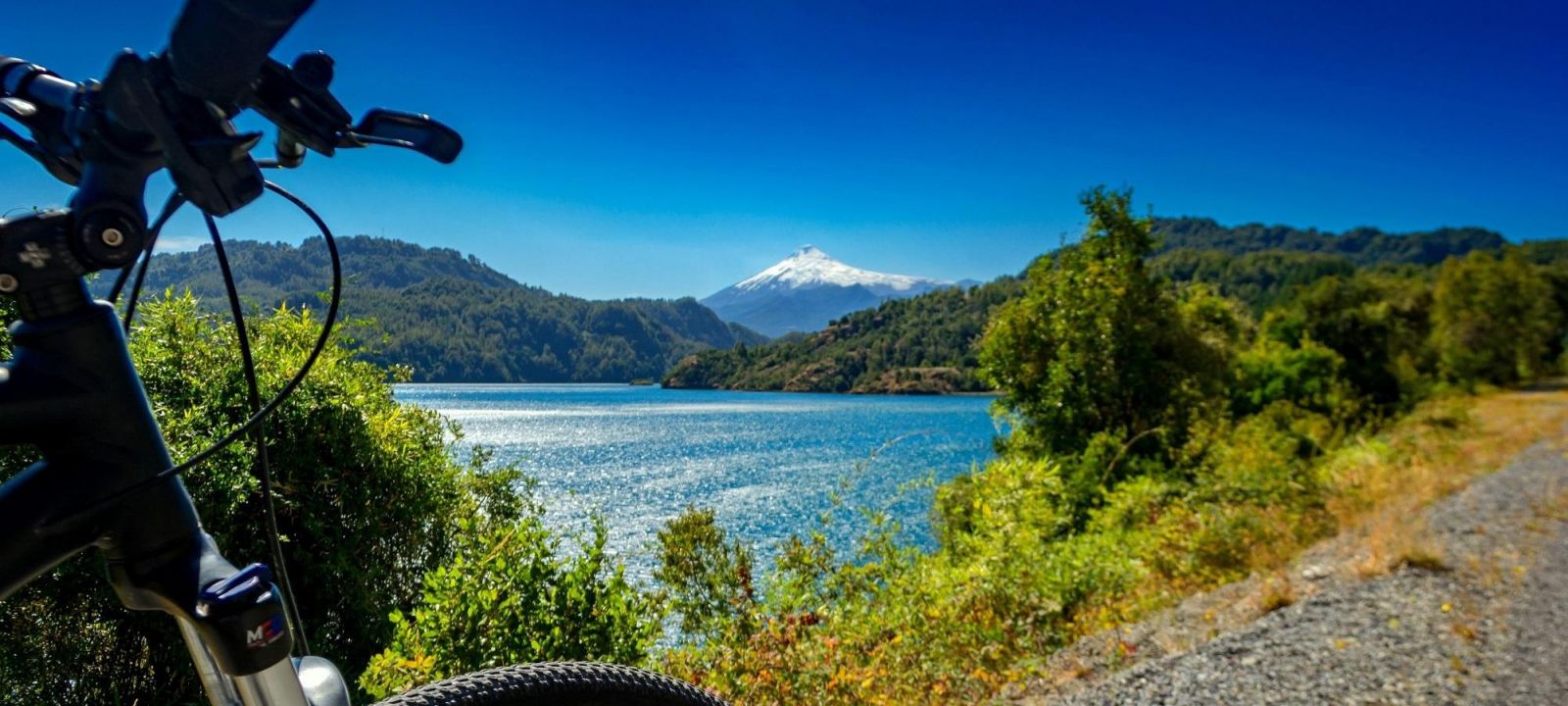
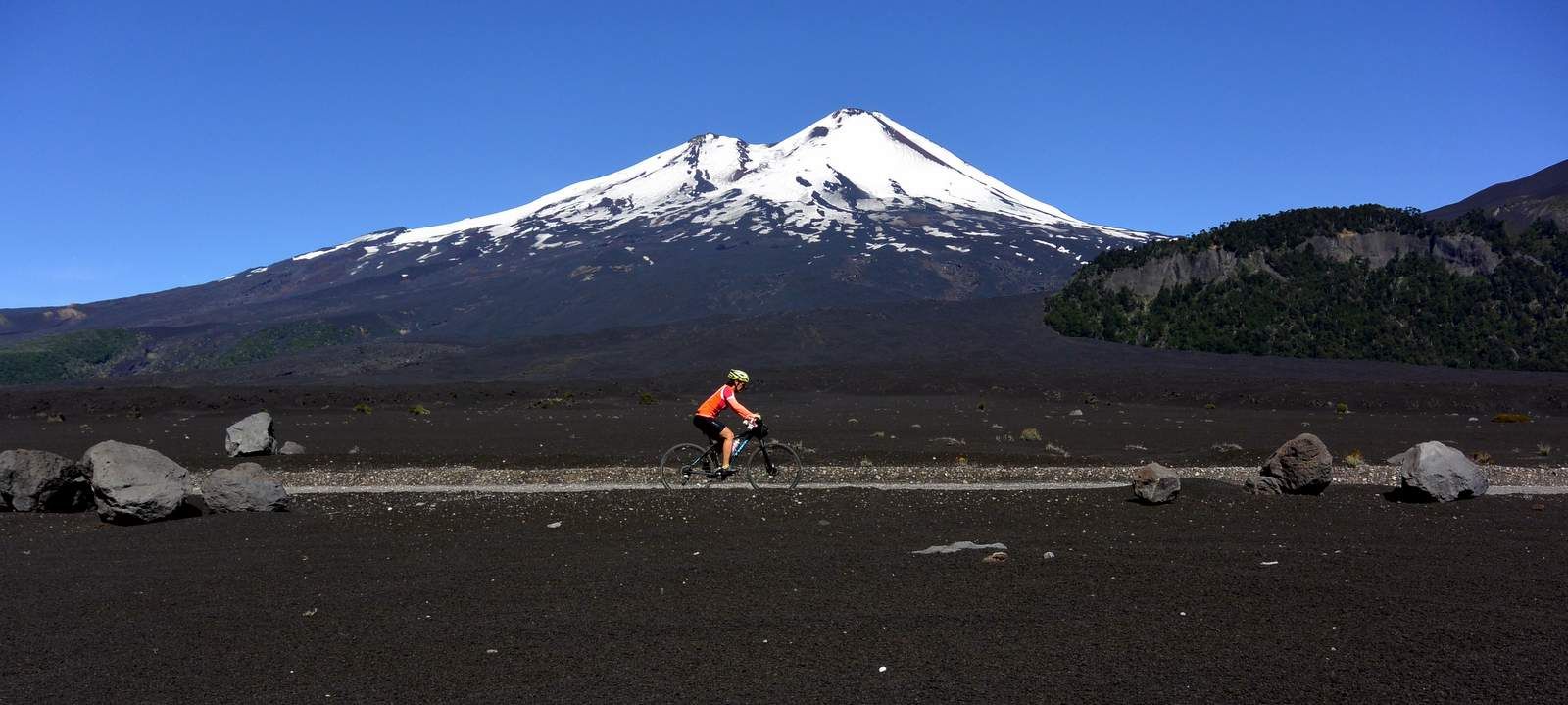
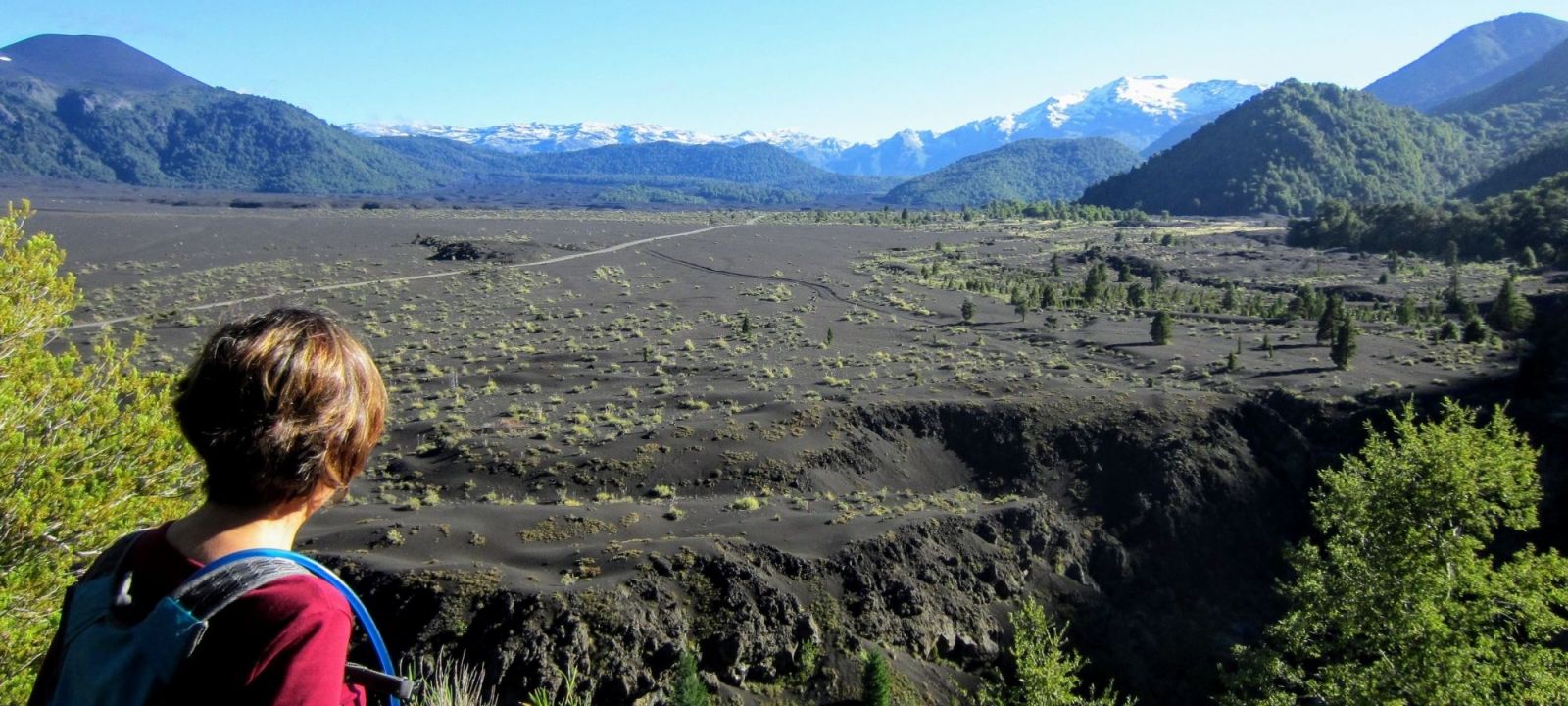
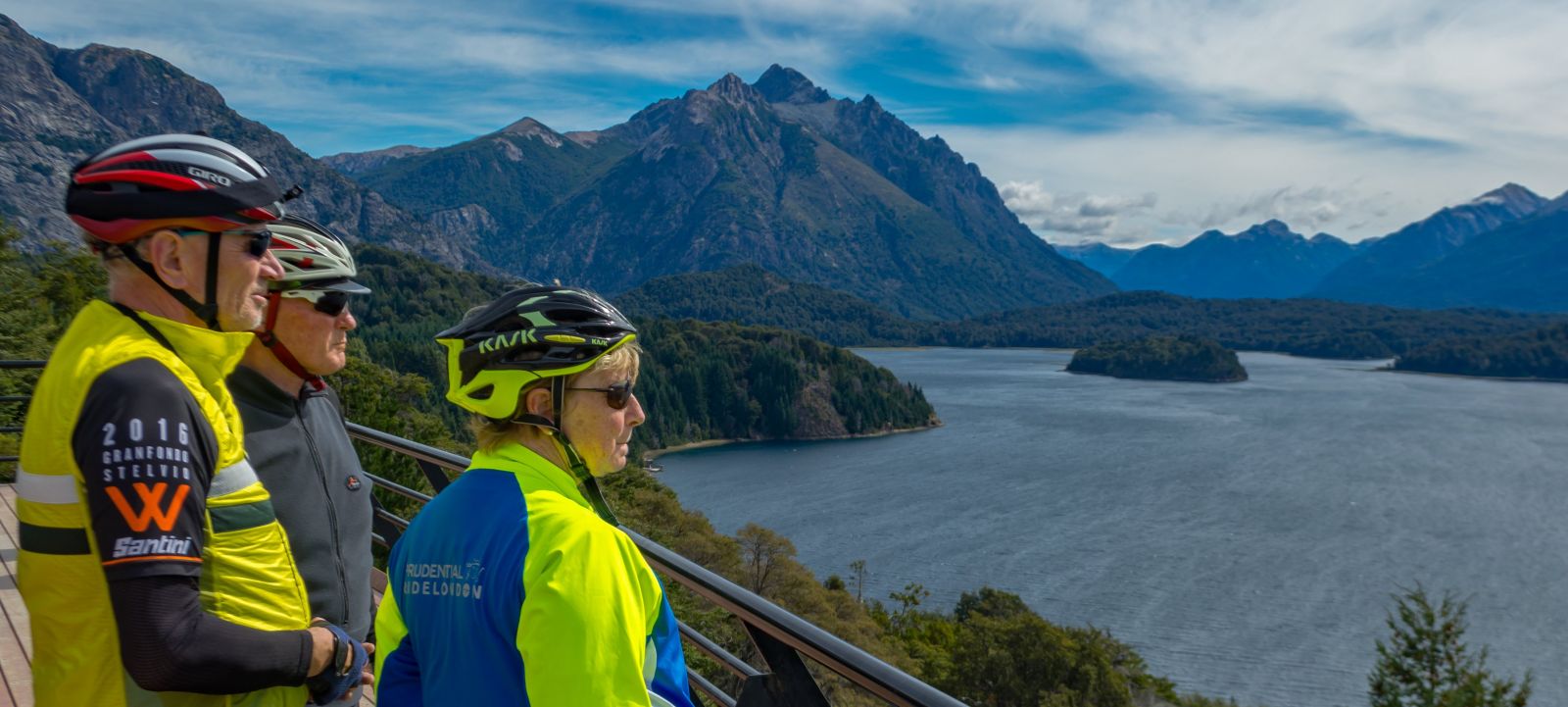
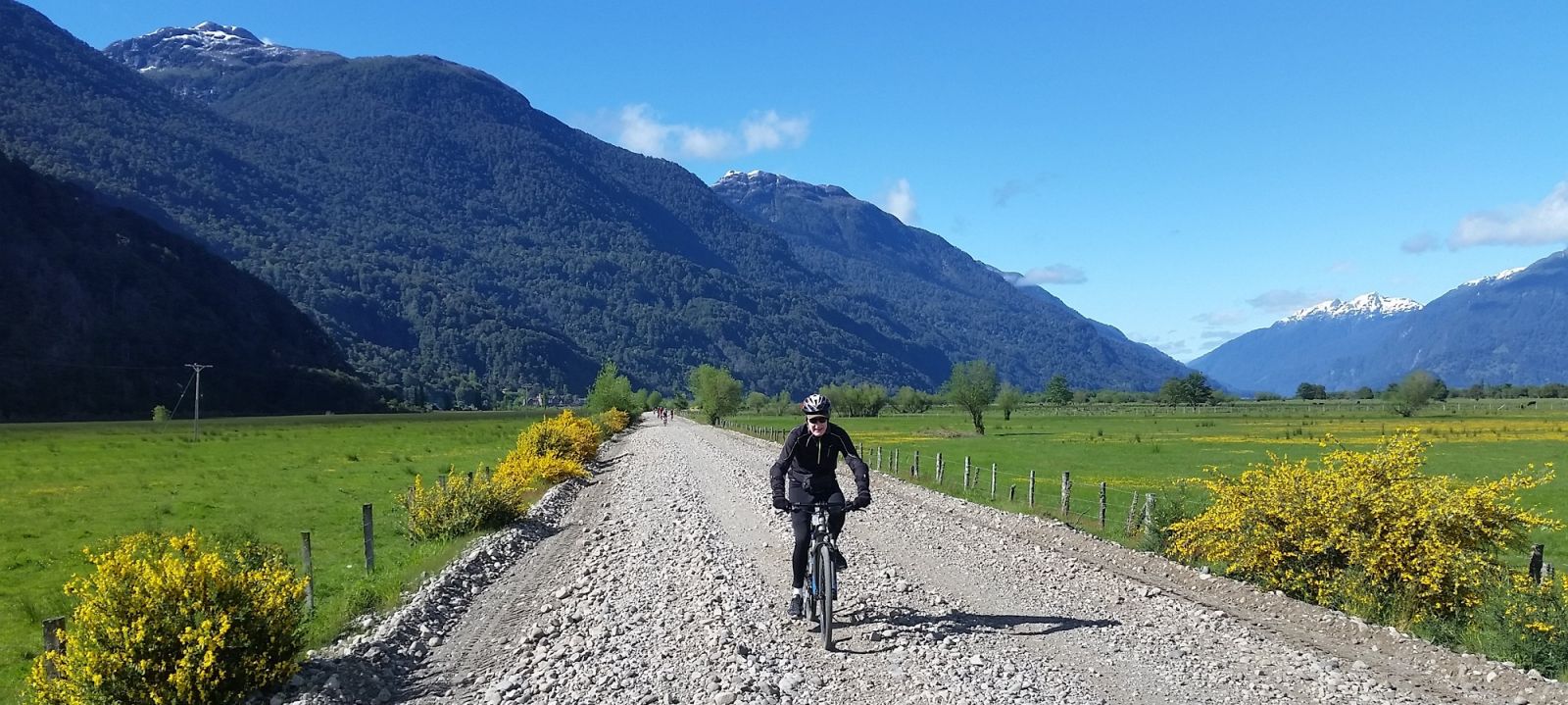
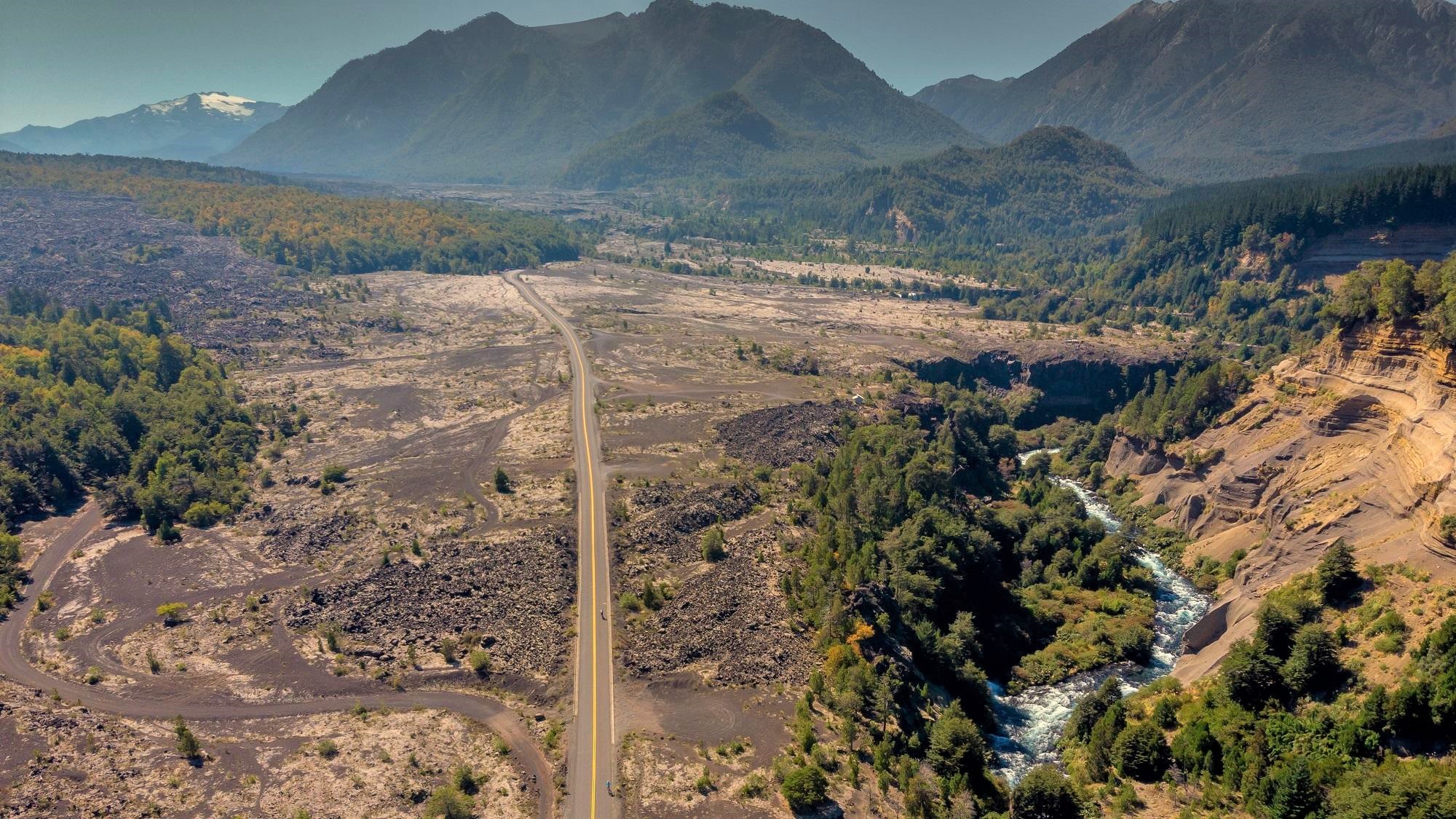
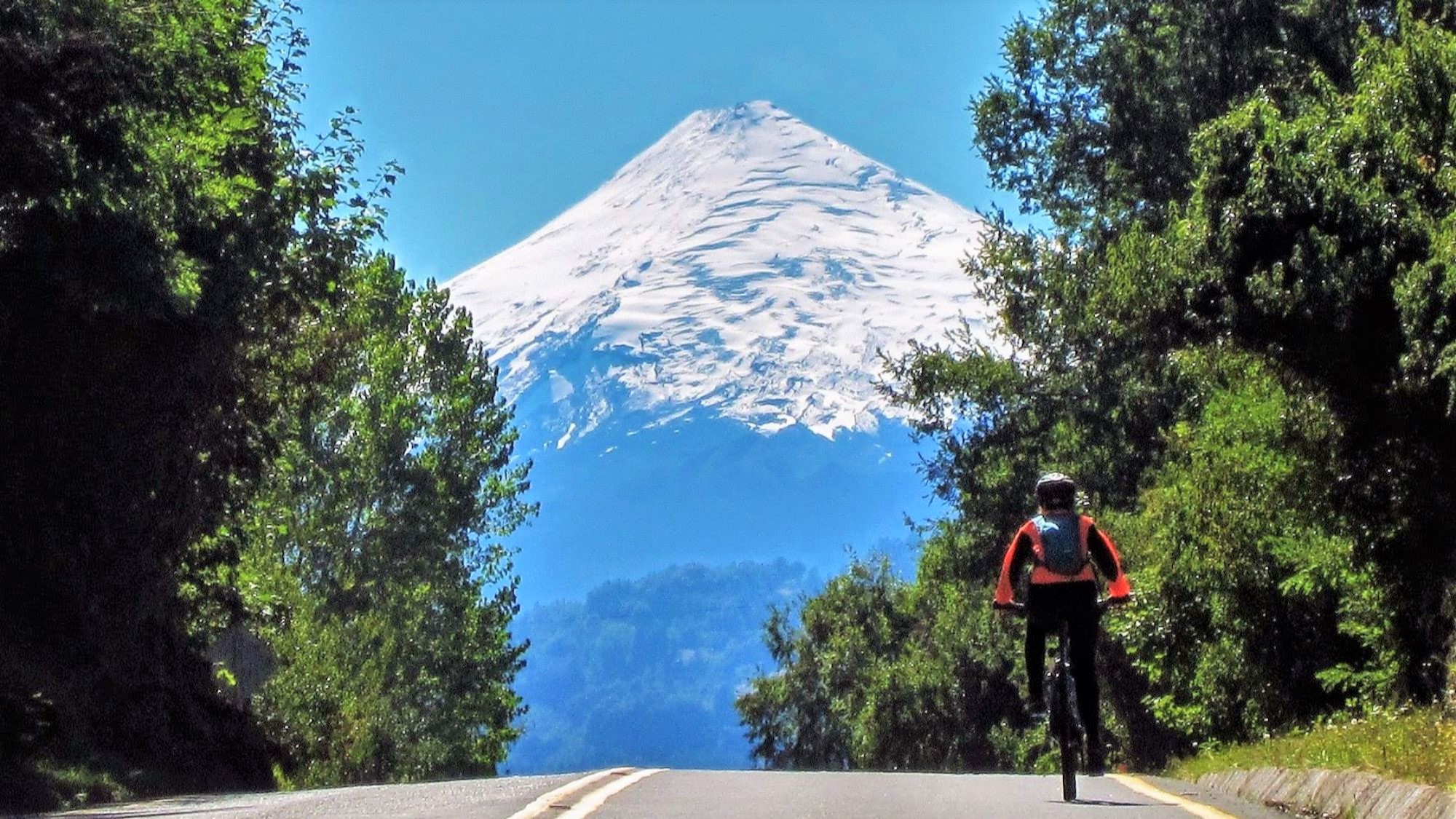


.jpg)